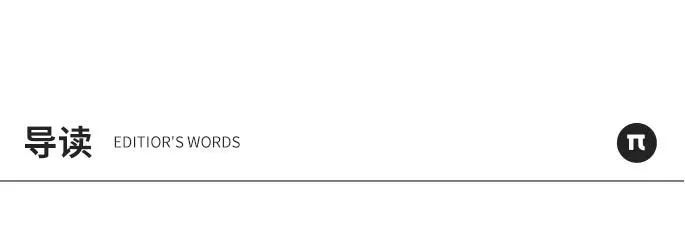
法国货运为何需要减碳?如何实现?

Aurélien Bigo
巴舍理耶研究院能源与经济发展系助理研究员


交通业二氧化碳排放量巨大,占法国2019年温室气体排放总量的31%。
1960年到2017年,货运二氧化碳排放量增加了3.3倍。
法国国家低碳战略提出了减少交通需求等五项行动,以实现货运减排。
国家低碳战略目标是2050年以前将石油使用降到0,石油目前占交通业能耗的90%。
如不改变现状,货运占交通业排放的比重会更大。
01
法国10%碳排放量来自货运
法国定下了2050年以前实现碳中和的目标[1],交通业作为“排放大户”是重点减排领域。前两年的疫情给出行带来了诸多限制,但在疫情之前的2019年,法国境内交通运输的直接排放占全国总排量比例高达31% [2]。

图片来源:PI France
虽然排放数据很难区分客运货运,但货运约占交通总排放量的近1/3,等同于全国总排量的10%[3]。货运又以陆路运输为主,其中排放量最大的大型货车占60%,其次是轻型商用车占16%,以国际海运为主的航运占14%,空运占10%[4]。

图片来源:PI France
注:2019年法国各种交通方式温室气体排放量,包括跨境交通。数据来源于法国跨专业大气污染技术研究中心CITEPA。
02
运输减排五项行动
法国国家低碳战略提出了运输减排五项行动:
减少运输需求
转向低排运输
增加交通工具上座率/载货量
减少交通工具能耗
交通能源去碳

图片来源:PI France - 法国运输减排五项行动
五项行动将助力法国实现2050货运彻底减碳的目标。大型货车、轻型商用车、货车、河运船舶等交通工具需要在27年内淘汰石油——这是一个不小的挑战,因为目前石油占交通业能源消耗的90%,且实际减排困难重重。
03
需求主导排放量变化
2017年法国货运产生的二氧化碳排放是1960年的3.3倍。排放量的变化有五个因素[5]。运输需求是最主要的因素,其计算单位为吨公里,增长源于货物量与运输距离的双重增长。1960-2017期间,尽管需求会在严重的经济危机(如石油危机、2008年经济危机)之后暂时下降,但总货运需求仍增长了3.4倍。
“1960年至2017年,货运排放增加了3.3倍。”
运输需求增长主要由陆路运输驱动,排放较多的陆路运输需求在交通总需求中的占比从1960年代的34%上升至2000年代中期的88%。与此同时,排放较少的铁路和水路运输的占比大幅下降[6]。运输方式变化使排放量增加了95%。
另外三个因素发挥的是正面作用,促使排放量下降。首先,所有运输方式的平均载货量都增加了。货车、火车、船舶等工具的载货量提升使得排放减少了34%。其次,能耗下降了。载货量增加虽然放缓了每公里能耗减少的幅度,但该数值在四十年间还是降低了10%。最后,2000年代末生物燃料的发展使得运输碳强度降低了16%,从生物燃料的全生命周期分析看来,其出现对碳强度的变化有很大影响[7]。
这些趋势在其他欧洲国家也存在[8]。运输需求在排放变化中占主导地位、运输需求又以道路运输为主、物流组织与技术进步不足以实现大幅减排…这些现象在各国都很明显。

图片来源:PI France - 法国1960年到2017年二氧化碳货运排放变化
04
五项行动
将排放变化的原因拆分为五个因素,有利于了解五项行动分别对实现气候目标的贡献。下图比较了基于2050国家低碳战略五项行动的预测、2019年以前发布的情境预测及法国环境能源管理局(ADEME)的2050情境预测。
2020年发布的国家低碳战略预计2050年的法国运输需求会增长40%,超过了基于现趋势的预测值。四个基于最激进减排手段的情境的预测减排幅度平均值是30%。尽管需求变化对交通减碳十分重要,但国家低碳战略似乎不指望大幅减少需求。不过,总需求只要能减少,就能促使陆路运输的比重下降,铁路、水路比重上升,减排期望超过20%。
基于现有趋势,车辆上座率未来有望略微提升,但其积极效应仍会低于减少运输需求和转向低排运输带来的效应——国家低碳战略的这两项行动尤其激进。交通工具能耗方面,2050年的能耗有望降低约20%,最乐观的预计是降低50%。在低碳战略的框架下,能效提升将主要来源于混动汽车及电动车的增多,以及热机的技术突破[9]。

图片来源:PI France
注:2050年以前,15个不同情境下各项行动带来的货运排放增减率[10]。红色为“基于现趋势”情境的平均值,绿色表示乐观计算的情境值。
交通能源去碳的积极效果在“维持现趋势”的情境下有限,但是在“追求碳中和”的情境下(特别是发生技术突破的情境下)则十分显著。这表示现趋势与缓解气变的方向相差甚远,必须大力扭转趋势,减排目标才能有望实现。
05
客运减碳更难?
客运和货运面临的减碳难题有共通之处。两种运输方式的交通基础设施和能源设施往往是共用的,“五项行动”对二者皆适用,二者排放量的历史变化趋势类似,且都以陆运为主。
但除了运人和运货的区别,货运还有一大特点:许多货运公司已经充分优化其成本,部分减排措施的采取力度比客运更大。现在的小型车载客率低,可以通过增加乘客数量实现减排,但现在的货车已经都是满载而行,没有提升载货率的空间。另外,货运降能耗的难度也大于客运。大型货车未来会使用什么类型的发动机还是未知数,要降低碳强度也比客车更难。因此,如果不打破目前的趋势,货运在未来几年甚至几十年的运输排放量甚至在法国排放量中所占的份额将有所增加,这是一个不容忽视的风险。
作者
Aurélien Bigo
编辑

1. This is the objective set by the national low-carbon strategy (SNBC): https://www.ecologie.gouv.fr/ strategie-nationale-bas-carbone-snbc. Achieving carbon neutrality requires dividing greenhouse gas emissions by 5.2 between 2021 and 2050 and increasing carbon sinks to achieve a balance between emissions and absorption.
2. Emissions accounting only takes into account direct vehicle emissions for the transport sector, without taking into account emissions related to energy production, construction and maintenance of vehicles and transport infrastructure, which are in other sectors or are sometimes imported emissions. The main statistics also generally do not include international maritime and air transport.
3. Figures from the CITEPA Secten report: https://www.citepa.org/fr/secten/. Freight transport accounts for 30% of national transport emissions and 9.4% of total national emissions, all sectors combined; adding international transport to the calculations increases these figures to 32% and 11.1% respectively.
4. Emissions from LCVs are counted as 60% for passengers and 40% for goods (see page 69 of Bigo’s thesis, 2020); for shipping, river freight transport and the « Maritime » categories (international, domestic and fishing shipping) are counted as goods, and the « Other shipping » category (pleasure boats and other small boats) is counted as passengers; for air transport, the breakdown is made on a pro rata basis by weight, considering that a passenger and his luggage represent 100 kg (methodology often used).
5. The breakdowns and main figures for 1960–2017 and the scenarios for the period up to 2050 are taken from the thesis « Les transports face au défi de la transition énergétique. Explorations between past and future, technology and sobriety, acceleration and slowing down », available at this link: http://www.chair-energy-prosperity.org/publications/travail-de-these-decarboner-transports-dici-2050/
6. Between 1960 and 2017, the modal share of rail fell from 56% to about 10%, and that of inland waterways from 10% to about 2%. See page 58 of the thesis.
7. In emission inventories, the use of biofuels is considered neutral and is not counted in the transport sector, as the CO2 emitted during their combustion is captured during plant growth. Considering the life cycle analysis but also the possible land use changes linked to their production, biofuels used in France in 2017 had however a carbon intensity similar to oil (see page 65 of the thesis). The emissions reductions granted to it are therefore largely artificial.
8. See the analysis on the Enerdata website, carried out with Ariane Bousquet, Laura Sudries and Bruno Lapillonne: https://www.enerdata.net/publications/ executive-briefing/transport-co2-emissions-trends.html9. In the SNBC, the consumption of the fleet of heavy diesel vehicles is reduced by 38% per kilometre travelled, even though these vehicles carry 24% more weight and efficiency gains are increasingly difficult and costly to achieve with combustion engines.
10. Of the 15 scenarios studied, 10 date from before 2019 and were studied in the thesis, to which the ADEME’s Transition(s) 2050 scenarios published at the end of 2021 were added. The scope here excludes LCVs (contrary to the same similar scheme on page 123 of the thesis) to facilitate comparison between scenarios.
